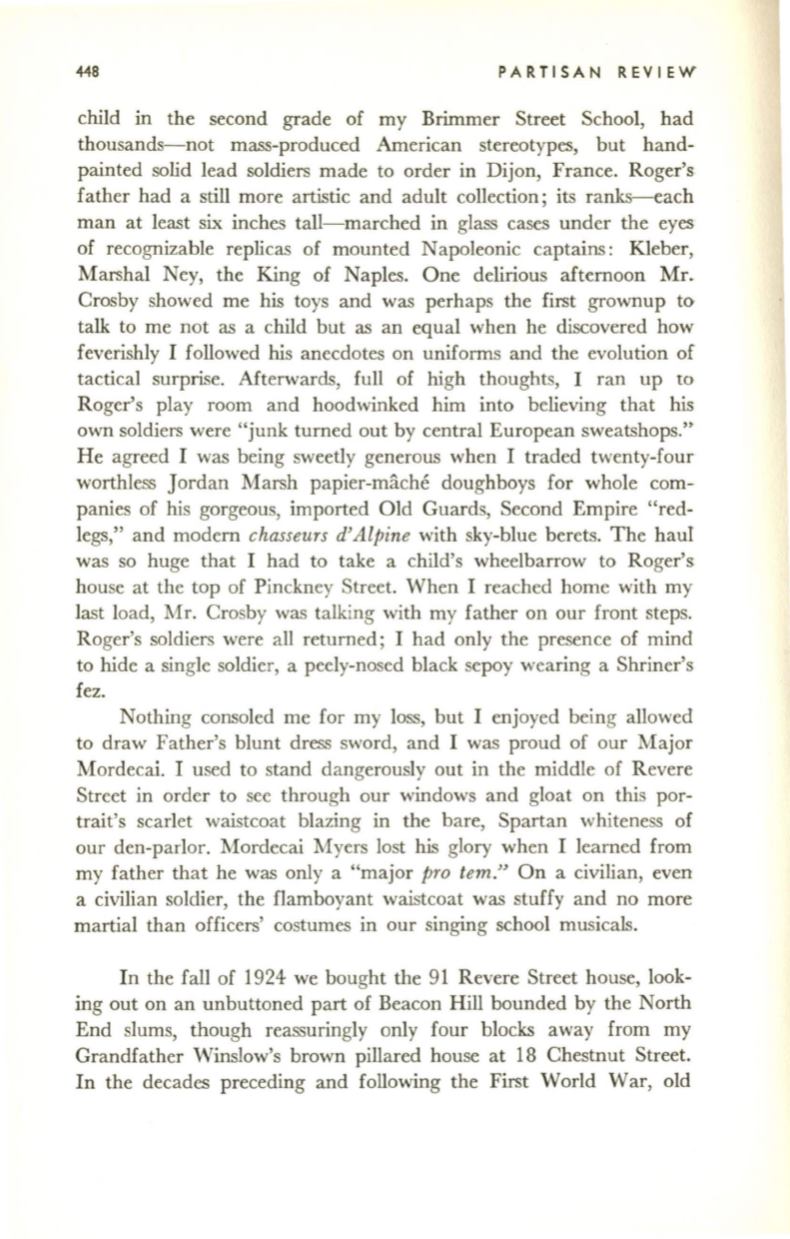
448
PARTISAN REVIEW
child in the second grade of my Brimmer Street School, had
thousands-not mass-produced American stereotypes, but hand–
painted solid lead soldiers made to order in Dijon, France. Roger's
father had a still more artistic and adult collection
i
its ranks-each
man at least six inches tall-marched in glass cases under the eyes
of recognizable replicas of mounted Napoleonic captains: Kleber,
Marshal Ney, the King of Naples. One delirious afternoon Mr.
Crosby showed me his toys and was perhaps the first grownup to
talk to me not as a child but as an equal when he discovered how
feverishly I followed his anecdotes on uniforms and the evolution of
tactical surprise. Mterwards, full of high thoughts, I ran up
to
Roger's play room and hoodwinked him into believing that his
own soldiers were "junk turned out by central European sweatshops."
He agreed I was being sweetly generous when I traded twenty-four
worthless Jordan Marsh papier-mache doughboys for whole com–
panies of his gorgeous, imported Old Guards, Second Empire "red–
legs," and modern
chasseurs d'Alpine
with sky-blue berets. The haul
was so huge that I had to take a child's wheelbarrow to Roger's
house at the top of Pinckney Street. When I reached home with my
last load, Mr. Crosby was talking with my father on our front steps.
Roger's soldiers were all returned
i
I had only the presence of mind
to hide a single soldier, a peely-nosed black sepoy wearing a Shriner's
fez.
Nothing consoled me for my loss, but I enjoyed being allowed
to draw Father's blunt dress sword, and I was proud of our Major
Mordecai. I used to stand dangerously out in the middle of Revere
Street in order to see through our windows and gloat on this por–
trait's scarlet waistcoat blazing in the bare, Spartan whiteness of
our den-parlor. Mordecai Myers lost his glory when I learned from
my father that he was only a "major
pro tern."
On a civilian, even
a civilian soldier, the flamboyant waistcoat was stuffy and no more
martial than officers' costumes in our singing school musicals.
In the fall of 1924 we bought the 91 Revere Street house, look–
ing out on an unbuttoned part of Beacon Hill bounded by the North
End slums, though reassuringly only four blocks away from my
Grandfather Winslow's brown pillared house at 18 Chestnut Street.
In the decades preceding and following the First World War, old


